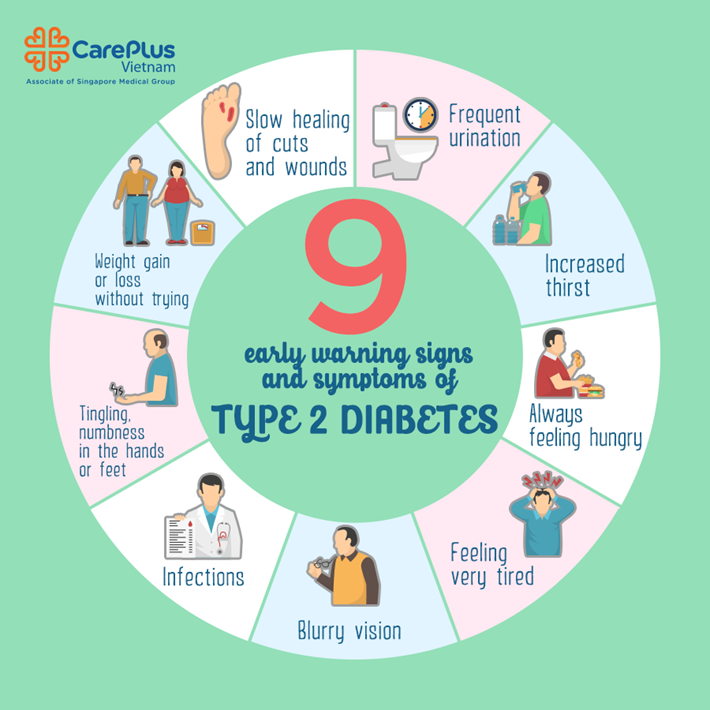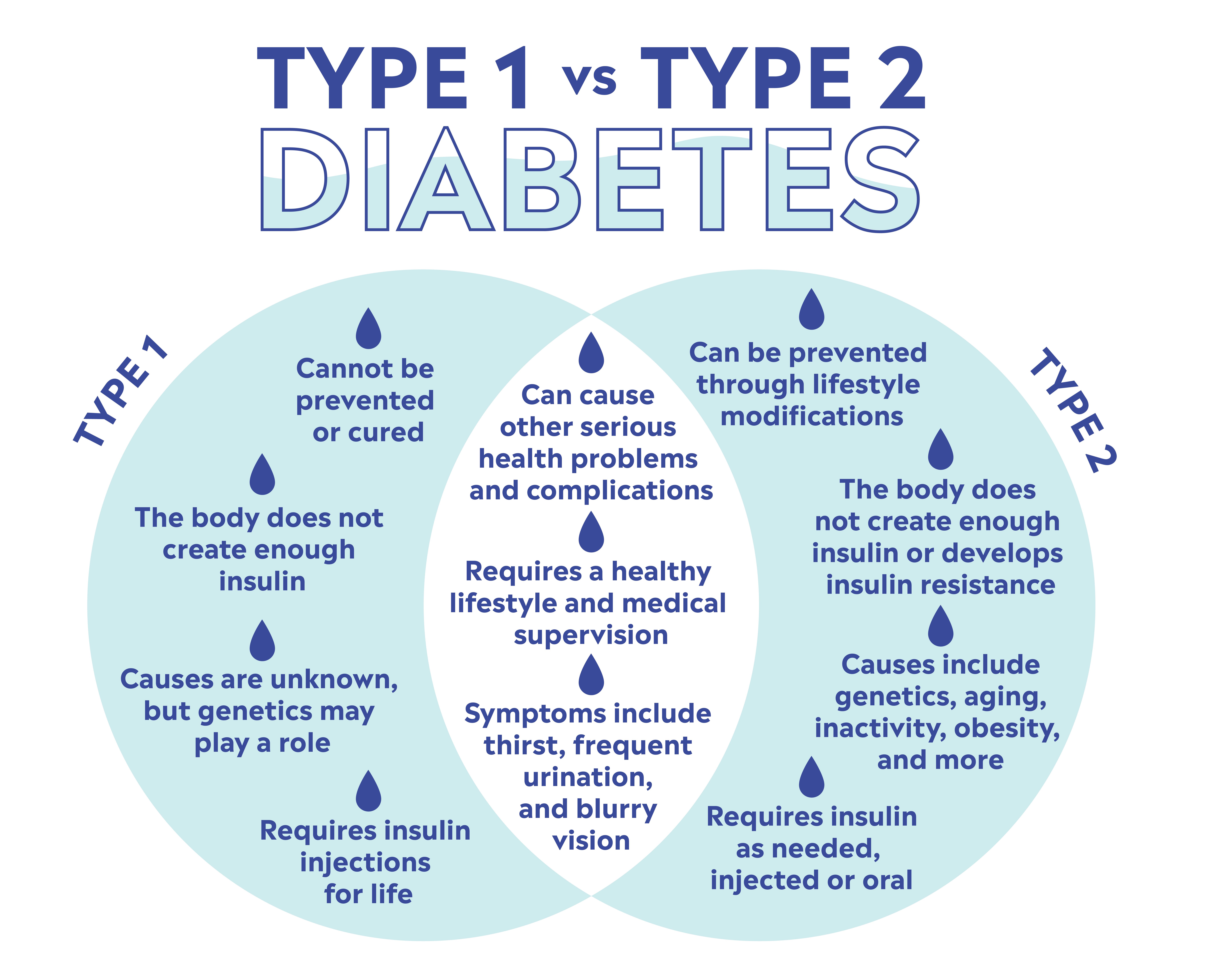Type 2 diabetes is a chronic condition that affects how your body processes blood sugar. Recognizing its symptoms early can help manage the disease better.
Type 2 diabetes symptoms can be subtle and easy to overlook. Feeling unusually thirsty, frequent urination, and fatigue are common signs. You might also notice blurred vision or slow-healing sores. These symptoms develop gradually, so many people don't realize they have the condition until it's advanced.
Understanding these signs is crucial for early diagnosis and treatment. By being aware, you can take steps to prevent complications and maintain a healthier lifestyle. Read on to learn more about the symptoms of Type 2 diabetes and how they might affect you.
Introduction To Type 2 Diabetes
Type 2 diabetes is a chronic condition that affects millions worldwide. Understanding its symptoms is crucial for early intervention. This blog post aims to inform you about type 2 diabetes and why early detection is vital.
What Is Type 2 Diabetes?
Type 2 diabetes occurs when the body cannot use insulin properly. Insulin is a hormone that helps glucose enter cells for energy. In type 2 diabetes, either the body resists insulin's effects or doesn't produce enough insulin. This leads to high blood sugar levels, which can cause various health issues.
Symptoms of type 2 diabetes often develop slowly. Common signs include frequent urination, increased thirst, and unexplained weight loss. Fatigue, blurred vision, and slow-healing sores are also symptoms. Recognizing these signs early can help manage the condition more effectively.
Importance Of Early Detection
Early detection of type 2 diabetes can prevent serious complications. If left untreated, high blood sugar can damage your heart, kidneys, and nerves. Regular check-ups and blood tests can catch the disease early.
Early intervention can help control blood sugar levels. Lifestyle changes, like diet and exercise, become more effective. Medication may also be needed to manage the condition. Identifying the disease early can lead to a healthier life.
Awareness of the symptoms and the importance of early detection can make a big difference. Stay informed and consult a healthcare provider if you notice any signs.

Credit: www.everydayhealth.com
Common Symptoms
Type 2 Diabetes affects many people around the world. Knowing the common symptoms can help you spot the disease early. Early detection can make managing the condition easier.
Frequent Urination
One common sign of Type 2 Diabetes is frequent urination. The body tries to get rid of extra sugar through urine. This causes you to visit the bathroom more often, especially at night. If you notice you are urinating more than usual, it might be a sign to see a doctor.
Increased Thirst
Increased thirst is another common symptom. As you urinate more, your body loses more water. This makes you feel thirsty all the time. Even if you drink a lot of water, the thirst may not go away. This constant need to drink can be a sign of Type 2 Diabetes.
Less Known Symptoms
Type 2 Diabetes can sneak up on you with subtle signs. Many people are unaware of some of its less known symptoms. Understanding these can help in early detection and management.
Unexpected Weight Loss
One lesser-known symptom is unexpected weight loss. Despite eating normally, you may notice your weight dropping. This happens because your body isn't using insulin well. It starts breaking down muscle and fat for energy.
Rapid weight loss can be alarming. It’s crucial to consult a doctor if this occurs. Early diagnosis can prevent complications.
Blurred Vision
Blurred vision is another symptom that often goes unnoticed. High blood sugar levels can affect the lenses of your eyes. This can lead to blurry vision, making it hard to focus on objects.
Many people think they need new glasses. But if the cause is diabetes, the problem persists. Proper blood sugar management can improve vision.
Physical Signs
Understanding the physical signs of Type 2 Diabetes is crucial. These symptoms can often be subtle, making it important to recognize them early. Two of the most common physical signs are fatigue and weakness and the slow healing of wounds. Recognizing these symptoms can prompt earlier diagnosis and treatment.
Fatigue And Weakness
One of the earliest signs of Type 2 Diabetes is fatigue and weakness. You might feel tired even after a full night's sleep. Your body struggles to convert food into energy. This process is disrupted because insulin isn't working properly. As a result, glucose stays in the blood rather than entering your cells.
Here's a quick checklist to see if you're experiencing fatigue due to Type 2 Diabetes:
- Feeling tired after small tasks
- Difficulty concentrating
- Muscle weakness
- Feeling sleepy during the day
Slow Healing Of Wounds
Another warning sign is the slow healing of wounds. High blood sugar levels can damage your blood vessels. This damage slows the healing process. You might notice that cuts or bruises take longer to heal. This is because your body is less effective at repairing itself.
Some common observations include:
- Frequent infections
- Ulcers on feet
- Prolonged healing time for cuts
Consider keeping a diary to track these symptoms. If you notice any of these signs, consult your doctor. Early detection of Type 2 Diabetes can lead to better management and improved health outcomes.
Emotional And Mental Indicators
Type 2 Diabetes can affect more than your physical health. It can impact your emotional and mental well-being too. Recognizing these signs is crucial for early intervention.
Mood Swings
People with Type 2 Diabetes often experience mood swings. Blood sugar levels can fluctuate, leading to sudden changes in mood. You might feel happy one moment and angry the next.
High blood sugar levels can make you feel irritable. Low levels can cause feelings of anxiety or sadness. Keeping track of these mood changes can help you manage your condition better.
Difficulty Concentrating
Another common symptom is difficulty concentrating. High blood sugar levels can affect your brain’s ability to function. You might find it hard to focus on simple tasks.
Low blood sugar levels can make you feel confused or dizzy. These concentration issues can affect your daily life and work. Monitoring your blood sugar levels can help maintain your mental clarity.
Here are some tips to improve focus:
- Stay hydrated
- Eat balanced meals
- Get regular exercise
- Practice stress-relief techniques
If you experience mood swings or concentration issues, talk to your doctor. They can help you manage your symptoms better.
Risk Factors
Type 2 diabetes is a growing health concern. Many factors increase the risk of developing this condition. Understanding these factors can help in managing and preventing diabetes. Risk factors include genetic and lifestyle elements that can influence the onset of the disease.
Genetic Factors
Family history plays a significant role in type 2 diabetes. If a close relative has diabetes, your risk increases. Specific genes also make some people more prone to this condition. These genetic factors can affect how your body processes insulin.
Ethnicity is another genetic factor. People from certain ethnic groups have a higher risk. These groups include African Americans, Hispanic/Latino Americans, Native Americans, and Asian Americans. Knowing your genetic risk can motivate you to take preventive steps.
Lifestyle Choices
Unhealthy eating habits contribute to type 2 diabetes. Diets high in sugar and unhealthy fats increase your risk. Being overweight or obese also makes you more susceptible. Excess body fat, especially around the abdomen, affects insulin function.
Lack of physical activity is another key factor. Regular exercise helps your body use insulin more effectively. Sedentary lifestyles increase the risk of type 2 diabetes. Smoking and excessive alcohol consumption are also risk factors. These habits can damage your body's ability to manage blood sugar.
Stress and poor sleep patterns can also impact your risk. Chronic stress affects hormone levels, which can lead to insulin resistance. Poor sleep disrupts your body's balance and can lead to weight gain and diabetes.
When To See A Doctor
Recognizing the symptoms of Type 2 Diabetes is crucial. If you notice any signs, it's important to seek medical advice. Knowing when to see a doctor can help you manage your health better.
Routine Check-ups
Routine check-ups are essential for early detection and management of Type 2 Diabetes. Regular visits to your healthcare provider can help monitor your blood sugar levels.
During these check-ups, your doctor may:
- Perform blood tests to check glucose levels.
- Discuss lifestyle changes, such as diet and exercise.
- Monitor for complications related to diabetes.
Routine check-ups should be scheduled at least once a year. For those with risk factors, more frequent visits may be necessary.
Urgent Symptoms
Some symptoms of Type 2 Diabetes require immediate medical attention. If you experience any of the following, contact your doctor right away:
| Symptom | Description |
|---|---|
| Frequent urination | Excessive trips to the bathroom, especially at night. |
| Extreme thirst | Persistent and unquenchable thirst. |
| Blurred vision | Difficulty seeing clearly, often due to high blood sugar levels. |
| Fatigue | Feeling unusually tired or weak. |
| Sores that heal slowly | Wounds or cuts that take a long time to heal. |
These symptoms might indicate severe blood sugar issues. Early intervention can prevent complications.
Don't wait. If you notice these signs, see your doctor immediately.

Credit: careplusvn.com
Managing Type 2 Diabetes
Managing Type 2 Diabetes involves making several lifestyle changes. These changes can help control blood sugar levels. They also prevent complications. Here are two key areas to focus on: diet and exercise.
Diet And Nutrition
Your diet plays a crucial role. Eating the right foods can help manage your diabetes. Focus on eating whole grains, fruits, and vegetables. These foods are high in fiber. Fiber helps control blood sugar levels.
Avoid sugary foods and drinks. They can cause blood sugar spikes. Choose lean proteins like chicken and fish. They provide energy without raising blood sugar. Drinking plenty of water is also important. It helps keep you hydrated and controls blood sugar.
Regular Exercise
Exercise is another key component. It helps lower blood sugar levels. Aim for at least 30 minutes of activity each day. Walking, swimming, and cycling are great options.
Exercise also helps with weight management. Being overweight can make managing diabetes harder. Regular exercise helps maintain a healthy weight. It also improves overall health and reduces stress.
Always consult your doctor before starting a new exercise routine. They can recommend the best types of exercise for you.

Credit: www.prevention.com
Frequently Asked Questions
What Are Common Symptoms Of Type 2 Diabetes?
Common symptoms include increased thirst, frequent urination, and fatigue. You may also experience blurred vision and slow-healing sores. Always consult a doctor for diagnosis.
Can Type 2 Diabetes Cause Weight Loss?
Yes, unexplained weight loss can be a symptom of type 2 diabetes. It's due to the body's inability to use glucose properly. Consult a healthcare provider for accurate diagnosis.
How Does Type 2 Diabetes Affect Vision?
Type 2 diabetes can cause blurred vision. High blood sugar levels affect the eye's lens, causing temporary vision changes. Regular eye check-ups are essential.
Is Fatigue A Symptom Of Type 2 Diabetes?
Yes, fatigue is a common symptom of type 2 diabetes. High blood sugar levels can affect energy levels. Proper management can help alleviate fatigue.
Conclusion
Recognizing type 2 diabetes symptoms is crucial for early intervention. Watch for signs like increased thirst, frequent urination, and fatigue. Swift action can prevent complications. Consult a doctor if you notice any symptoms. Managing diabetes involves lifestyle changes and medical guidance.
Stay informed, stay healthy, and take care of your body. Early detection makes a big difference. Keep an eye on your health and seek help when needed. Your well-being matters.






